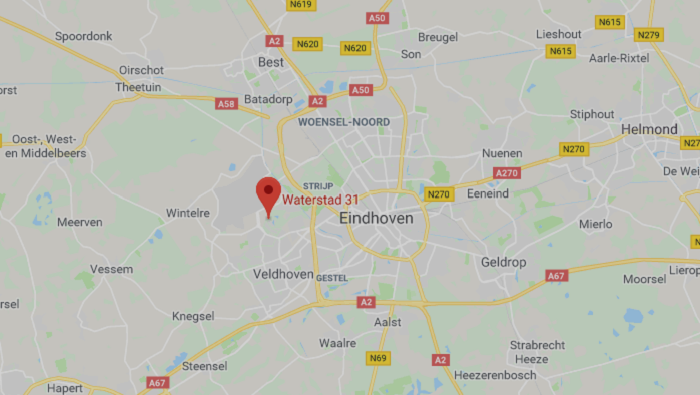Multi-view perspective correction
Design for multi-view perspective correction
Fly Elise-ng offers the most versatile and most advanced multi-projector design, auto-alignment and edge-blend software solutions.
Our Immersive Calibration PRO and Immersive Display PRO auto-alignment and edge-blend tools have evolved to one of the most used software in all simulation market segments. Flight, drive, boat, golf and other simulation and other 3D engines/games can be hooked with Immersive Display PRO to produce 100% geometrically correct and edge-blended visual systems.
Thousands of home-built, professional and certified simulators use Fly Elise-ng software for their visual systems.



Creating an optimal edge-blending system, which makes the maximal utilization of the projector pixels and light, requires a careful design of the projection setup. The projector types, their position and orientation, the projection screen size and shape, the cockpit shell size, occlusions and shadow casting, etc. can have a huge impact on the fidelity and the quality of the final geometric correction and edge blending.
Fly Elise-ng offers the Immersive Designer PRO software for proper and optimal design of any projection setup. The WYSIWYG user interface, integrated projectors models database and virtually unlimited projection screen shapes allows the users to visually design and evaluate their projection setups and make the weighted tradeoffs. The software includes a set of analysis modules for different kinds of geometrical and optical projector light-path analysis that helps in the design and decision process.

Designing the projection setup for 100% accurate and true geometric correction for 3D game engines and simulation setups requires even more attention and design considerations. Computer generated graphics and perspective views have a limitation of the total field of view (FOV) that can be rendered to a single view. In practice, rendering FOVs of 100 or more degrees will result in a “pinch” distortion and unusable view. As a consequence, creating a visual projection setups with FOVs of 180 or larger horizontal FOV, requires a 3D game engine to generate multiple views. Each view will be generated with a FOV of less than 100 degrees and combined and edge by Immersive Display PRO.
Almost all flight simulators P3D, DCS, X-Plane as well as all graphics engines like Unity, Unreal, etc.. already support configurable multi-view rendering.
However, combining multiple perspective views as one continuous undistorted image on a curved projection screen requires additional image geometric correction (stretching and squeezing) which is dependent on the physical projection setup, projection screen, projectors light path and the designed eye-point.
Designing a projection setup for multi-view projection involves additional analysis for projector pixel utilization and image stretching from a design eyepoint.
The latest version of Immersive Designer PRO introduces a new analysis module for analysis and evaluation of the perspective image pixel utilization and stretching.
A lot of users who did not use Immersive Designer PRO or created their projection setups ad-hoc without any analysis, contact our support services with questions like: “why is my image blurred when the edge-blending is enabled?” or “why is my resolution so low when I enable the warping and edge-blending?”
Puur designed projection setup can lead to suboptimal projection and pixel utilization even when using the high resolution and high performance projectors.
This post will show 2 possible projection setups and will show the consequence of the projector and projection screen choices on the pixel utilization and pixel stretching.
Both setups use cylindrical projection screens and HD projectors with resolution 1920×1080. For the best edge-blending performance an overlap if about 15% projector image is required.
The first setup is based on 2 short-throw projectors with a throw ratio of 0.6. The screen has a radius of 1.5 meters and height of 1.8 meters. Total horizontal angle of the projection screen is 180 degrees.

The short throw projectors cover the projection screen with additional projection overshoot.
The projector pixel utilization analysis (due to the overshoot and the overlap) shows a projector pixel usage of about 66%.

However, the processing needed to ensure 100% accuracy multi-view projection requires additional pixels and stretching. Only 64% of the projectors pixels will be used for generating the perspective projection.

And the stretching analysis shows that the simulator has to generate perspective views with horizontal FOV of 110 degrees. Fitting those views on the projection surface will require pixel stretching in some image areas of up to 210% (2.1). This means that some of the pixels wile be stretched to their double size which results in pixels and resolution loss.

The second projection setup is based on 3 normal-throw projectors with a throw ratio of 1. The screen has a radius of 1.5 meters and height of 1.8 meters. Total horizontal angle of the projection screen is 220 degrees.

The projectors cover the projection screen with additional projection overshoot.
The projector pixel utilization analysis (due to the overshoot and the overlap) shows a higher projector pixel usage of about 76%.

This setup shows a much higher pixel utilization due to the perspective correction. Up to 77% of the projectors pixels will be used for generating the perspective projection.

The pixel stretching analysis shows that the simulator has to generate perspective views with lower horizontal FOV of 93 degrees. Fitting those views on the projection surface will require way less pixel stretching with up to 180% (1.8). This stretching in combination with the smaller FOV will ensure less pixel and resolution loss.

A tradeoff has to be made between less performant-performant projection with 2 short-throw projector with less FOV (180 degrees) and the more pixel-performant projection with 3 projectors and larger total FOV (220 degrees).
If you need professional consultancy and support for designing the most optimal projection based on the budget and the space constraints you can contact us on our support address and we will offer you commercial consultancy services.
We`re here to help!

Office
Waterstad 31
5658 RE Eindhoven
The Netherlands
Hours
M-F: 8am - 10pm
S-S: Closed
Call Us
+31 40 7114293
Support
support@elise-ng.net
